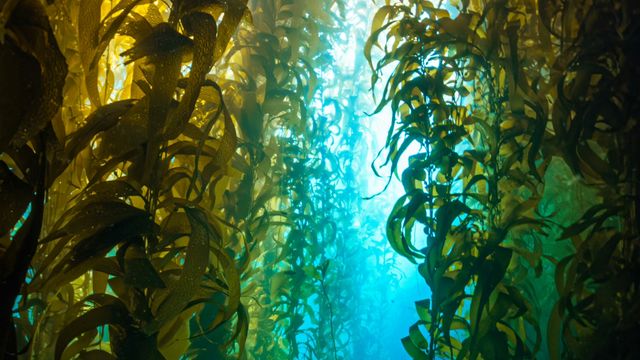
Sea urchins, despite lacking brains or hearts, exhibit a surprising ability to detect danger in the presence of sunflower sea stars. This intriguing behavior is the focus of a recent study conducted by ecologists and students at the University of California, Santa Cruz. The research, published on July 9 in the journal Proceedings of the Royal Society B, investigates whether sunflower sea stars can deter urchins from consuming kelp, a vital marine resource.
The study took place near Sitka, Alaska, where UC Santa Cruz students, equipped with SCUBA gear, placed caged sunflower sea stars on the ocean floor. This area has seen its once-thriving kelp beds decimated by resident urchins, transforming them into barren landscapes. The research is part of the university’s BIOE 159 Marine Ecology Field Quarter course, a program that immerses students in hands-on aquatic research and provides opportunities for publication.
Lead author Rae Mancuso expressed gratitude for participating in the study, stating, “Participating in the entire process, from diving to scientific writing, was exciting and impactful as an undergraduate student. I hope the findings from this field experiment contribute in some way to the restoration of our all-important kelp forests.”
The Importance of Kelp Forests
Kelp forests serve as crucial nurseries for thousands of marine species, including commercially valuable ones like abalone and rockfish. Economically, they contribute an estimated $500 billion annually worldwide, being integral to products ranging from toothpaste to pharmaceuticals.
However, about a decade ago, significant kelp forests in California and Oregon vanished, coinciding with the local extinction of sunflower sea stars due to a wasting disease outbreak in 2013. This dual loss has spurred interest in restoring these ecosystems and understanding the role sunflower sea stars might play in their recovery.
According to Kristy Kroeker, the study’s senior author and a professor of ecology and evolutionary biology at UC Santa Cruz, “We show that the sea stars create a ‘landscape of fear’ among red sea urchins in degraded urchin barrens that reduces grazing on kelp.”
Methodology and Findings
The research team, guided by faculty, developed a project that involved placing pairs of cages made from plastic pipe and fine mesh at three different locations with degraded urchin barrens. Kelp blades were attached to lines tied to all cages, with one cage in each pair left empty as a control, while the other housed a sunflower sea star.
After 24 hours, results showed that red urchins maintained an average distance of about six feet from the kelp in cages with sea stars, unlike green sea urchins, which were undeterred and consumed the kelp. Despite mixed results, the study suggests that sunflower sea stars can effectively deter red urchins, supporting their potential role in kelp forest recovery.
“These are very hungry urchins that are dissuaded enough by the scent of a sea star to deter grazing on kelp forests,” said Kroeker, highlighting the promise of this approach for ecosystem restoration.
Future Implications and Research
The study proposes that increasing the presence of sunflower sea stars, either naturally or artificially, could benefit kelp forests by reducing urchin herbivory without requiring manual removal by divers. The authors also hypothesize that free-roaming sea stars might keep urchins further away from kelp forests.
Further research is needed to determine whether sunflower sea stars would similarly affect purple sea urchins, notorious for their role in kelp deforestation. Kroeker noted, “My educated guess is that they will deter purple urchin grazing as well, but it’s a question of how much and for how long.”
The study, titled “Sunflower sea star chemical cues locally reduce kelp consumption by eliciting a flee response in red sea urchins,” includes contributions from UC Santa Cruz students Rosie Campbell and Nathan Hunter, as well as professors Pete Raimondi, Sarah Gravem from Oregon State University, and Aaron Galloway from the University of Oregon. The research was supported by grants from the Nature Conservancy and the National Science Foundation.
As efforts to restore kelp forests continue, the findings of this study offer a promising natural solution to manage sea urchin populations and protect these vital marine ecosystems.




